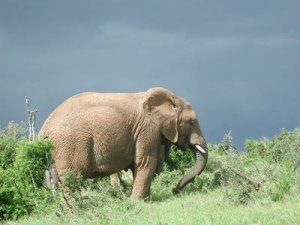Historic Occasion as Addo Elephant National Park Opens Fence

History was made today when the boundary fence between two sections of Addo Elephant National Park was taken down, providing new habitat for many of the Park’s wildlife species.
SANParks’ Managing Executive: Parks, Paul Daphne and Park Manager,
The dropping of the fence will effectively merge the two areas of the Park to form a 24 000-hectare area, stretching from the Addo Main Camp down to the Park’s Camp Matyholweni rest camp near Colchester on the Algoa Bay coastline. Elephants, lion, hyena and other species will be able to move gradually across to the Colchester area of the Park. Buffalo, zebra and antelope species have already been introduced to the area.
Speaking at the ceremony, Daphne named Addo Elephant National Park not only as a benchmark for tourism in the Eastern Cape but also as a successful conservation and tourism product within national parks managed by South African National Parks (SANParks).
Daphne went on to describe the historical nature of the fence opening, highlighting the fact that elephants would now return to the same land on which the original small group of remaining Addo elephants had sheltered before proclamation of the Park in 1931.
“Now we can really say ‘Mayibuye Ndlovu’ or let the elephant return,” said Daphne.
Addo Elephant National Park’s Manager,
Tourism expert, Peter Myles, said Addo Elephant National Park had successfully bucked the negative tourism trend in the Eastern Cape by showing an increase in visitor numbers and accommodation occupancy while other tourism institutions in the Eastern Cape had shown a 20% decline in 2009.
Myles also highlighted the pivotal role that Addo Elephant National Park had played in the local economy and tourism offering of the Sundays River Valley.
Author: South African National Parks





















 Please wait!
Please wait!